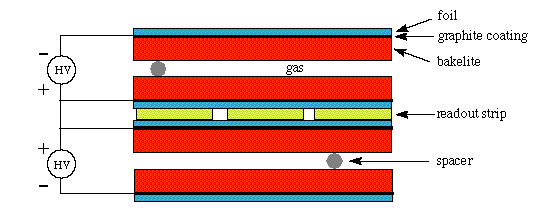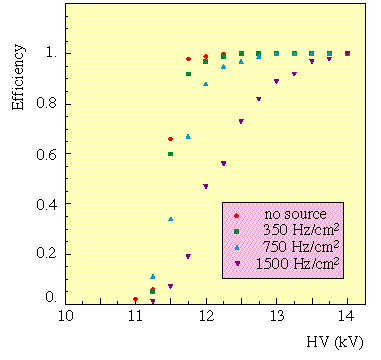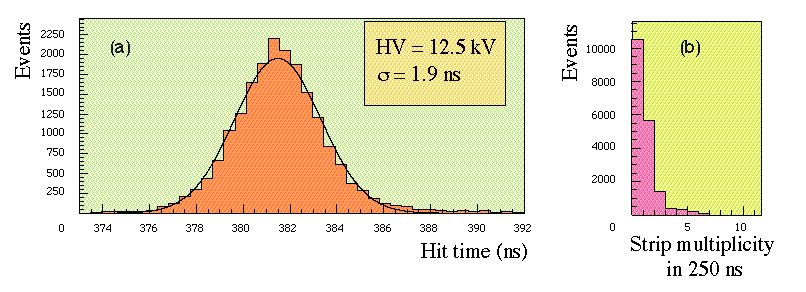
Figure 10: Sketch of a double gap RPC.
5.1 Specialized Trigger Detector
The Resistive Plate Chamber is a cheap charged particle
detector often used for triggering purposes over large areas,
because of its fast response time and its robustness. Due to the
large amount of charge necessary for the detection, the standard
RPC is quite slow to recover after an hit. This peculiarity makes
problematic its use in the LHC enviroment where particle rate,
including radiation background, is very large. The RPCs should
show to be able to stand in CMS a target value of ~1kHz/cm2
without a significant efficiency loss.
The final output of the research and development of the past
years [5] was the decision to use a double gap RPC (sketched in
Figure 10), to overcome the problem of the spacers between
bakelite plates while minimizing the readout channels, andthe
decision to operate it in avalanche mode, using C2H2F4/C4H10
(90/10), to reduce the amount of charge and therefore stand a
larger rate.

Figure 10: Sketch of a double gap RPC.
The results of a recent test done using a radioactive source
to simulate a radiation background uniformly illuminating the
chamber are shown in Figure 11: we see that the efficiency loss
at the nominal voltage of HV = 12.5kV is negligible up to a
minimum ionizing particles rate of 750Hz/cm2.
We can state that the RPC is a suitable detector for the LHC muon
detection environment.

Figure 11: RPC Efficiency for different radiation background: the
quoted rate is the m.i.p. rate equivalent to a given dose.

Figure 12a shows that the measured RPC time resolution is very
good and Figure 12b shows that the chamber remains quiet after
the hit detection, since the strip multiplicity in a very large
gate time after the detected hit is small.